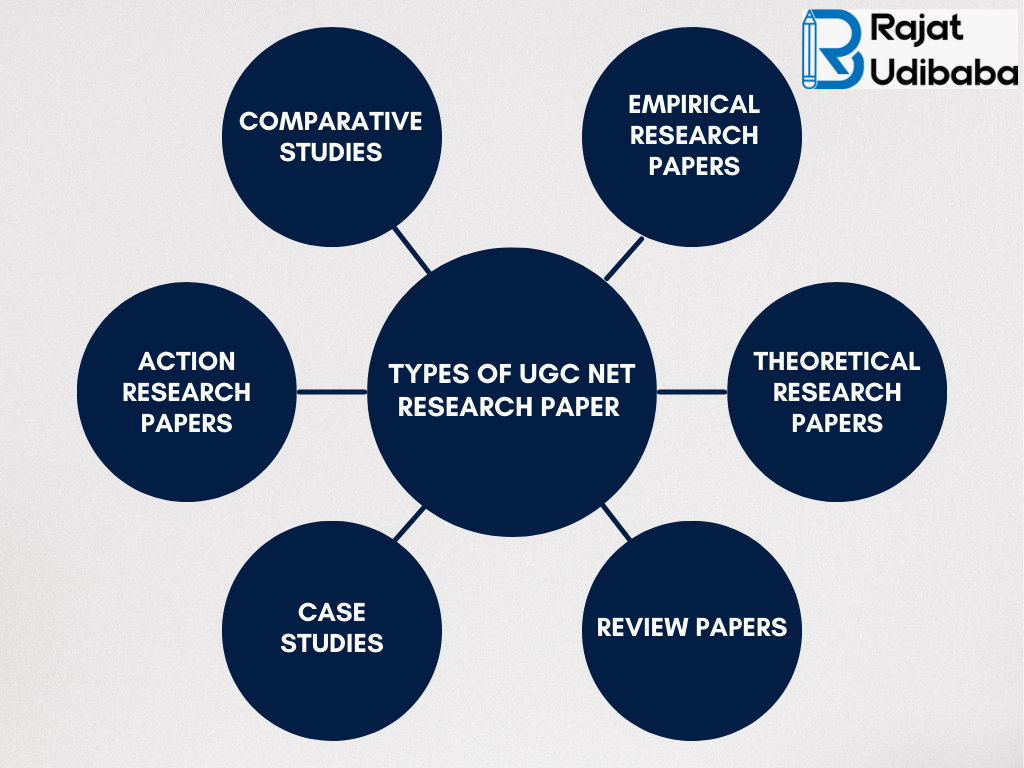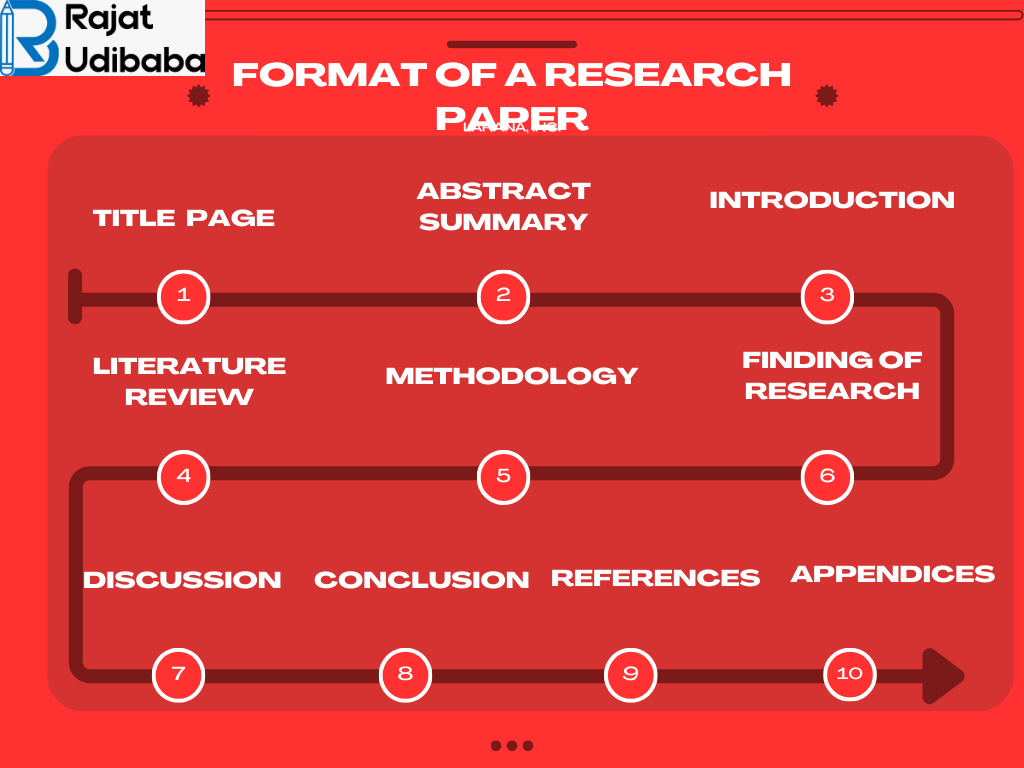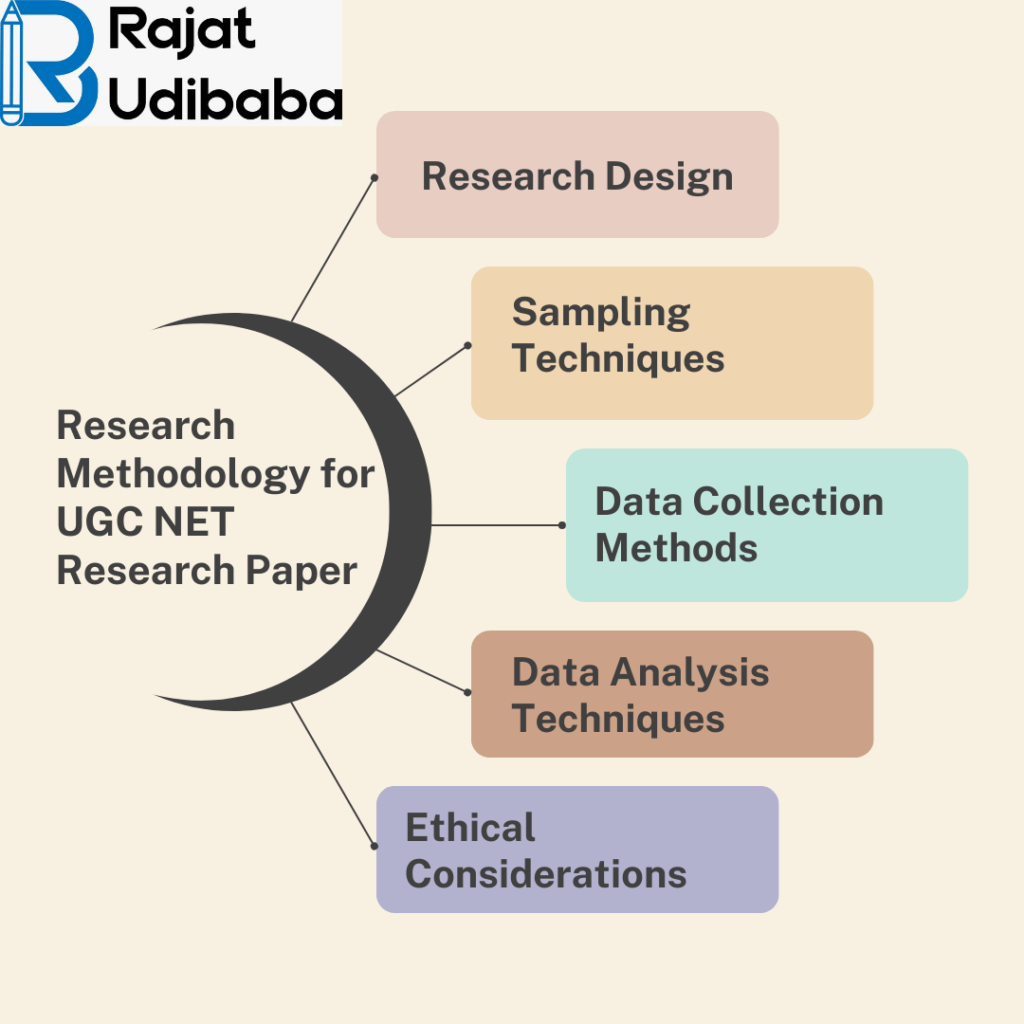Research papers for the UGC NET exam are essential as they contribute to academic knowledge and help in understanding various subjects. These papers can be classified into different types, such as qualitative, quantitative, and mixed-method research, each serving unique purposes. The research methodology outlines the systematic approach to conducting research, ensuring reliability and validity in findings. Understanding these aspects is crucial for candidates as it prepares them for teaching and research roles in higher education.
What is a Research Paper?
A research paper is an academic document that presents an original idea or analysis on a specific topic. It usually includes sections like an introduction, literature review, methodology, results, discussion, and conclusion. The goal is to add new knowledge to a field by reviewing existing studies and sharing new findings. Writing a research paper involves careful data collection and analysis, following ethical guidelines, and properly citing sources to maintain credibility.
What is the importance of a research paper for the UGC NET Exam?
A research paper is crucial for the UGC NET Exam as it assesses candidates’ understanding of research concepts, methodologies, and ethics. It ensures that candidates can critically analyze and contribute to academic discourse, which is essential for teaching and research roles in higher education.
Additionally, familiarity with research papers enhances candidates’ ability to formulate research questions, design studies, and interpret data effectively. This knowledge is vital for addressing complex problems in their respective fields.
Types of UGC NET Research Paper

1. Empirical Research Papers
Empirical research papers focus on collecting and analyzing data from real-world observations or experiments. Researchers use methods like surveys, experiments, or observations to gather information. After collecting the data, they analyze it using statistical techniques to conclude. The results help answer specific research questions and contribute new knowledge to the field. These papers are important for UGC NET candidates as they demonstrate the ability to conduct original research based on evidence.
2. Theoretical Research Papers
Theoretical research papers aim to develop or refine existing theories in a specific area of study. They start with a review of the current literature to understand what has already been established. Researchers then analyze these theories critically and may propose new ideas or modifications to existing ones. This type of paper is essential in fields like philosophy and sociology, where understanding complex concepts is crucial. For UGC NET aspirants, these papers help deepen theoretical knowledge and critical thinking skills.
3. Review Papers
Review papers summarize and analyze existing research on a particular topic. They provide an overview of what is known, highlighting key studies and findings. Researchers evaluate the strengths and weaknesses of previous work and identify gaps in the literature. This helps to suggest areas for future research. For UGC NET candidates, writing a review paper is valuable for understanding the broader context of their field and framing their own research questions based on established knowledge.
4. Case Studies
Case studies involve a detailed examination of a specific instance, event, or situation. Researchers collect data through methods like interviews, observations, and document analysis to understand the context and implications of the case. The findings provide insights that can be applied to similar situations or inform broader theories. For UGC NET aspirants, case studies are particularly useful in fields like education and social sciences, where real-world applications of theories are important for understanding complex issues.
5. Action Research Papers
Action research papers focus on solving specific problems within a community or organization. Researchers identify a problem, implement a plan to address it, and then observe the results. This process involves planning, acting, observing, and reflecting on the outcomes. Action research is practical and aims to create positive change while also enhancing the researcher’s understanding of the situation. For UGC NET candidates, this type of research is relevant in education and social work, emphasizing hands-on solutions and community involvement.
6. Comparative Studies
Comparative studies analyze two or more subjects to find similarities and differences. Researchers select specific cases or groups and establish criteria for comparison. By examining these subjects closely, they can draw conclusions that help understand broader trends or theories. For UGC NET candidates, comparative studies are valuable in fields like political science and sociology, where understanding different perspectives can lead to deeper insights into social dynamics and issues.
Format of a Research Paper

The format of a research paper is essential for presenting your findings in a clear and organized manner. While specific requirements may vary depending on the discipline and the journal or institution, most research papers follow a standard structure. Below is a detailed outline of the typical format of a UGC NET research paper:
1. Title Page
- Title: A concise and descriptive title that reflects the main focus of the research.
- Author(s): Name(s) of the author(s) along with their affiliations (institution, department).
- Date: The date of submission or publication.
2. Abstract Summary
- A brief summary (usually 150-250 words) of the research paper, including the research question, methods, results, and conclusions. The abstract should be self-contained and provide a snapshot of the entire study.
3. Introduction
- Background Information: Introduce the topic and provide context for the research.
- Research Question: Clearly state the research question or hypothesis.
- Significance of the Study: Explain the importance of the research and its potential contributions to the field.
- Objectives: Outline the main objectives of the study.
4. Literature Review
- A review of existing research related to your topic. This section should:
- Summarize key findings from previous studies.
- Identify gaps in the literature that your research aims to address.
- Provide a theoretical framework for your study.
5. Methodology
- Research Design: Describe the overall approach (qualitative, quantitative, or mixed methods).
- Participants/Sample: Detail the sample size and selection criteria.
- Data Collection Methods: Explain how data was collected (surveys, interviews, experiments, etc.).
- Data Analysis: Describe the techniques used to analyze the data (statistical methods, coding procedures, etc.).
- Ethical Considerations: Discuss any ethical issues and how they were addressed (informed consent, confidentiality).
6. Results
- Present the findings of your research in a clear and organized manner. This section may include:
- Tables and figures to illustrate key data.
- Descriptive statistics and inferential statistics as appropriate.
- A narrative description of the results, highlighting significant findings.
7. Discussion
- Interpret the results in the context of the research question and existing literature. This section should:
- Discuss the implications of your findings.
- Compare your results with previous studies.
- Address any limitations of the study and suggest areas for future research.
8. Conclusion
- Summarize the main findings and their significance. This section should:
- Restate the research question and how it was addressed.
- Highlight the contributions of the study to the field.
- Provide recommendations based on the findings.
9. References
- A list of all sources cited in the paper, formatted according to a specific citation style (APA, MLA, Chicago, etc.). Ensure that all references are complete and accurate.
10. Appendices (if applicable)
- Include any supplementary material that supports your research but is not essential to the main text. This may include:
- Raw data
- Detailed descriptions of instruments or questionnaires
- Additional tables or figures
Formatting Guidelines for Research Paper
- Font and Size: Use a standard font (e.g., Times New Roman, Arial) in 12-point size.
- Margins: Typically, 1-inch margins on all sides.
- Line Spacing: Double spacing is common for the main text, while single spacing may be used for footnotes and references.
- Page Numbers: Include page numbers in the header or footer.
- Headings and Subheadings: Use clear headings and subheadings to organize sections and improve readability.
Step by Step Guide to Writing a Research Paper

Writing a UGC NET research paper is very complicated, and one has to adhere to the steps below to complete the same:
1. Choose a Research Topic
Selecting a research topic is a critical first step that sets the foundation for your entire paper. A well-chosen topic should not only align with your interests but also fill a gap in existing literature. Conduct preliminary readings in your field to discover current trends, debates, and unresolved questions to choose a UGC NET topic. Having an idea of the topic scope helps you to do an in depth analysis. Additionally, assess the feasibility of your topic by ensuring access to relevant data and literature, which will facilitate a thorough investigation.
2. Conduct a Literature Review
A literature review is vital for situating your research within existing knowledge. Systematically search for scholarly articles, books, and academic sources related to your topic using databases like JSTOR and Google Scholar. Take detailed notes on key findings, methodologies, and theoretical frameworks. Organize your notes thematically to identify patterns and gaps, informing your research question and justifying your study’s significance.
3. Formulate a Research Question or Hypothesis
Developing a clear research question or hypothesis is essential for guiding your study. The question should be specific, measurable, and researchable. Identify gaps from your literature review to formulate a focused question. If relevant, create a hypothesis predicting the relationship between variables. This question or hypothesis will shape your methodology, data collection, and analysis, leading to meaningful conclusions.
4. Design the Research Methodology
The research methodology outlines your approach to answering the research question. Choose a design that fits your objectives, such as qualitative, quantitative, or mixed methods. For qualitative research, use interviews or focus groups. For quantitative research, decide on experiments, surveys, or observational studies. Specify your sampling technique to ensure accurate representation. A clear methodology enhances reliability and allows for replication.
5. Collect Data
Data collection is crucial in the research process. Use various techniques based on your methodology. For qualitative studies, conduct interviews or focus groups in a comfortable setting. For quantitative research, design clear surveys for measurable data. Keep detailed records of participant demographics and context. Ensure ethical considerations, such as informed consent and confidentiality, are prioritized throughout the process.
6. Analyze Data
Data analysis interprets collected information to draw conclusions. For quantitative data, use statistical software like SPSS or R for descriptive and inferential analyses. Choose appropriate statistical tests based on your research design. For qualitative data, use coding techniques to categorize responses and identify themes. Ensure your analysis addresses the research question and connects findings to existing literature.
7. Write the Research Paper
Writing a research paper involves synthesizing your findings into a structured document. Start with a compelling title. Write a concise abstract that summarizes your research question, methodology, key findings, and conclusions. Provide context in the introduction. Critically engage with existing literature. Clearly outline your methodology, results, and discussion. Include a comprehensive reference list formatted correctly.
8. Revise and Edit
Revising and editing your research paper is essential. Review content for clarity, coherence, and logical flow, ensuring arguments are well-supported. Check organization and transitions between sections. After addressing content, proofread for grammar, typos, and formatting. Seek feedback from peers or mentors to identify overlooked areas for improvement.
Research Methodology for UGC NET Research Paper

Research methodology is a critical component of any research paper, particularly for UGC NET aspirants, as it outlines the systematic approach taken to investigate a research problem. A well-defined methodology not only enhances the credibility of the research but also provides a clear framework for replicating the study. Below are the key elements and considerations for developing a robust research methodology for a UGC NET research paper.
1. Research Design
The research design serves as the blueprint for the study. It can be categorized into three main types:
- Descriptive Research: This design is used to describe characteristics of a population or phenomenon. It often involves surveys or observational studies to gather data without manipulating variables.
- Correlational Research: This design examines the relationship between two or more variables to determine if they are associated. It does not imply causation but helps identify patterns and trends.
- Experimental Research: This design involves manipulating one or more independent variables to observe their effect on a dependent variable. It is the most rigorous form of research and is often used in scientific studies.
2. Sampling Techniques
Choosing the right sampling technique is crucial for ensuring that the research findings are representative of the population. Common sampling methods include:
- Random Sampling: Every member of the population has an equal chance of being selected. This method minimizes bias and enhances the generalizability of the results.
- Stratified Sampling: The population is divided into subgroups (strata) based on specific characteristics, and random samples are taken from each stratum. This method ensures representation across key demographics.
- Purposive Sampling: Researchers select participants based on specific criteria relevant to the research question. This method is useful for qualitative studies where in-depth insights are required.
3. Data Collection Methods
The choice of data collection method depends on the research design and objectives. Common methods include:
- Surveys and Questionnaires: These tools are effective for collecting quantitative data from a large sample. They can include closed-ended questions for statistical analysis or open-ended questions for qualitative insights.
- Interviews: Conducting structured or semi-structured interviews allows researchers to gather detailed qualitative data. This method is particularly useful for exploring complex topics and obtaining personal perspectives.
- Focus Groups: This method involves guided discussions with a small group of participants to explore their perceptions and experiences related to the research topic.
- Document Analysis: Analyzing existing documents, such as reports, articles, or archival materials, can provide valuable insights and context for the research.
4. Data Analysis Techniques
Data analysis is essential for interpreting the collected data and drawing meaningful conclusions. Depending on the nature of the data, various techniques can be employed:
- Quantitative Analysis: Statistical methods, such as descriptive statistics, inferential statistics, and regression analysis, are used to analyze numerical data. Software tools like SPSS or R can facilitate this process.
- Qualitative Analysis: Techniques such as thematic analysis, content analysis, or grounded theory can be used to analyze qualitative data. This involves coding the data to identify patterns and themes.
5. Ethical Considerations
Ethical considerations are paramount in research. Researchers must ensure informed consent from participants, maintain confidentiality, and avoid any form of deception. Institutional Review Boards (IRBs) or ethics committees also review the research proposal to ensure compliance with ethical standards.
How to Publish a Research Paper for UGC NET?
For candidates preparing for the UGC NET (University Grants Commission National Eligibility Test) in India, publishing research papers in recognized journals is crucial for enhancing their academic credentials. The UGC has established a list of approved journals to ensure that research published by scholars meets certain quality standards. These journals are categorized under the UGC-CARE (Consortium for Academic and Research Ethics) framework, which helps maintain the integrity of academic publishing.
Types of UGC-Approved Publications
1. Group I Journals: These journals are recognized by the UGC-CARE and have undergone a rigorous evaluation process. They are considered credible and publish high-quality research across various disciplines. Examples include:
- Indian Journal of Science and Technology
- Journal of Indian Research
- International Journal of Research in Engineering and Technology
2. Group II Journals: These are journals indexed in globally recognized databases such as Scopus, Web of Science, or other reputable indexing services. They are also approved by the UGC and are known for their stringent peer-review processes. Examples include:
- Journal of Applied Physics
- Journal of Chemical Sciences
- Journal of Environmental Management
3. National and International Journals: UGC also recognizes various national and international journals that publish research in specific fields. These journals often have a broader reach and can significantly enhance the visibility of your research. Examples include:
- Economic and Political Weekly
- Indian Journal of Public Administration
- Asian Journal of Communication
Everything About Research Paper in Humanity
A research paper in the humanities is a formal document that presents an in-depth analysis, interpretation, or argument regarding a specific topic within the humanities disciplines. These papers allow scholars to explore complex ideas, cultural phenomena, and human experiences. Unlike scientific research papers, which often rely on empirical data, humanities research papers emphasize critical thinking, interpretation, and qualitative analysis.
- Humanities research papers focus on interpreting texts, artifacts, or cultural practices. Researchers analyze meanings, themes, and contexts to provide insights into human behavior and societal norms.
- Unlike quantitative research, humanities research often embraces subjectivity, allowing for multiple interpretations and perspectives. This richness of viewpoints enhances the depth of analysis.
- Researchers in the humanities employ various methodologies, including textual analysis, ethnography, historical research, and comparative studies. These methods help uncover layers of meaning and context.
- While the structure may vary, humanities research papers typically include an introduction, literature review, methodology, analysis, and conclusion. This organization helps present arguments clearly and logically.
Everything About Research Paper in Science Subjects
A research paper in science is a formal document that shares the results of scientific studies, experiments, or investigations. It allows researchers to communicate their findings to other scientists and the public, helping everyone understand different scientific topics better. The major subjects in UGC NET include Computer Science and Applications, Electronic Science, Environmental Sciences, Forensic Science and Anthropology for Science subjects.
- Scientific research papers are based on empirical evidence, which means they use data gathered from experiments, observations, or simulations. This evidence is important for testing ideas and making reliable conclusions.
- Most scientific research papers follow a standard format known as IMRaD, which stands for Introduction, Methods, Results, and Discussion. This structure makes it easier for readers to follow the research and understand what was done.
- Scientific research often focuses on quantitative analysis, which means it deals with numerical data that can be measured and analyzed statistically. This helps researchers draw objective conclusions and allows others to repeat the study if needed.
FAQs
What are the types of research methods for UGC NET?
UGC NET research methods include qualitative, quantitative, and mixed methods. Qualitative methods focus on understanding phenomena, while quantitative methods emphasize numerical data and statistical analysis.
What is the importance of research and research methodology?
Research and research methodology are crucial for generating knowledge, solving problems, and informing decision-making. They provide a structured approach to inquiry, ensuring reliability and validity in findings.
What are the four types of research methodology?
The four types of research methodology are descriptive, analytical, experimental, and exploratory. Each type serves different research purposes, from describing phenomena to testing hypotheses and exploring new areas.
What are the 7 basic research methods with examples?
The seven basic research methods include surveys (questionnaires), interviews (personal discussions), observations (field studies), experiments (controlled tests), case studies (in-depth analysis), content analysis (document review), and focus groups (group discussions).
What type of paper is UGC NET?
UGC NET papers are primarily research-oriented, focusing on assessing candidates’ knowledge in their respective subjects. They include multiple-choice questions covering both general and subject-specific topics.
What is research and its types?
Research is a systematic investigation aimed at discovering new information or validating existing knowledge. Types of research include basic, applied, qualitative, quantitative, and mixed-methods research.

